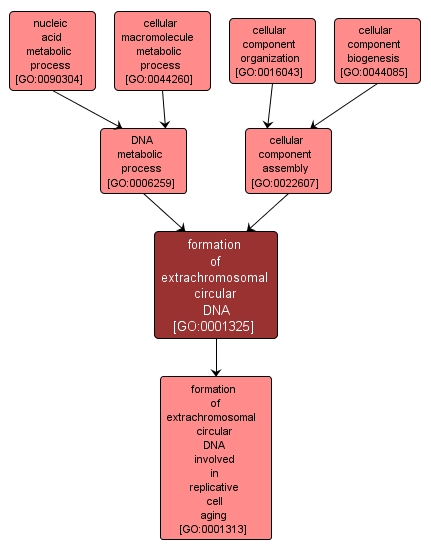GO TERM SUMMARY
|
| Name: |
formation of extrachromosomal circular DNA |
| Acc: |
GO:0001325 |
| Aspect: |
Biological Process |
| Desc: |
Excision from the chromosome and circularization of a region of chromosomal DNA, generally, but not always, via homologous recombination between direct tandem repeats. |
|

|
INTERACTIVE GO GRAPH
|














